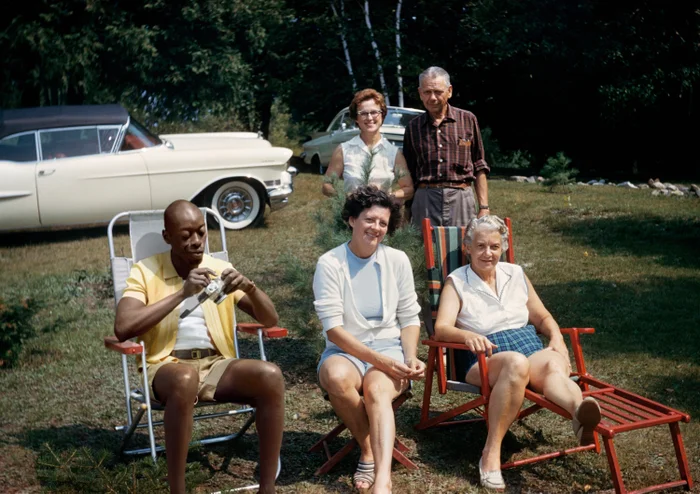Artist Inserts Himself in Photos Where History Did Not Want Him
- Editor OGN Daily
- Sep 22, 2024
- 2 min read
Updated: Oct 21, 2024
With photographer Lee Shulman, Senegalese self-portraitist Omar Victor Diop ingeniously inserts himself into photos taken in the American South in the 1950s and '60s.

That, of course, was a time period when Black Americans were historically unwelcome in the spaces where Diop is photographed. Diop is the only Black subject in each of the images. Sometimes he is easy to spot, sometimes the photo needs closer inspection.
Conceived by British photographer Lee Shulman and Senegalese self-portraitist Diop, the series sees the duo utilize a collection of family photos from 1950s and 1960s America.
They then artfully edit Diop into a series of intimate scenes, both public and private, in spaces where Black people were often shut out.
The idea came to Shulman when he noticed the empty chair in each photo, which the photographer likely vacated to take the image. Given that the photos were taken during a time when segregated spaces were commonplace, the empty chair became symbolic to the artists: “Every time I saw that chair, I saw Omar in (it),” Shulman said.
All photos courtesy of The Anonymous Project/Omar Victor Diop
The photos are joyful and jarring; provocative and oddly familiar. That dissonance is the point, the artists said. "We tend to have this glamorized gaze towards history," Diop told CNN. "And in doing so, we forget how it’s easy not to make room for someone who’s different."
More than 60 years after the photos were taken, much of America appears different now. Gently probing, playfully satirical, Shulman and Diop remind us that much remains the same.
“It’s a very contemporary project,” Shulman said. “It has a lot of relevance to the world we live in today.”
Being There is published by Textuel and available now.



